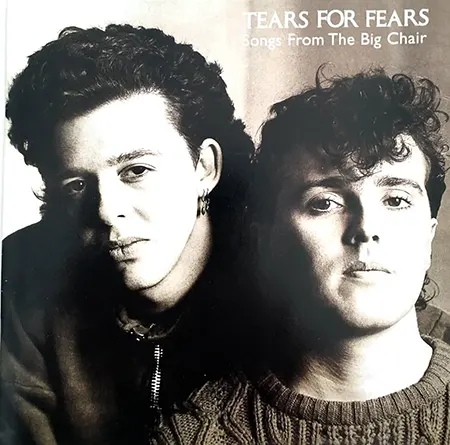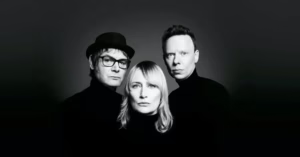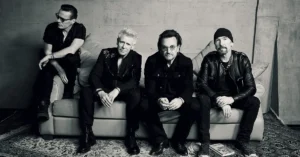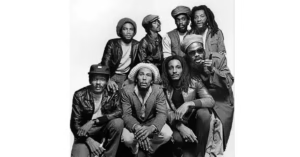Tears for Fears: From Synth-Pop to Soulful Introspection
Tears for Fears. Formation and Origins
Formed: 1981
Origin: Bath, Somerset, England
Tears for Fears. Founding Members:
- Roland Orzabal – Vocals, guitars, keyboards, primary songwriter
- Curt Smith – Vocals, bass
Orzabal and Smith were childhood friends who had played together in a mod band called Graduate before founding Tears for Fears, drawing inspiration not just from pop but from psychology and inner struggle. Their name came from Arthur Janov’s Primal Therapy, which emphasized confronting repressed childhood trauma — a theme that would define their lyrics.
Tears for Fears. Early Success: The Hurting (1983)
Their debut album was a synth-pop triumph that combined catchy melodies with deep emotional and psychological themes.
✦ The Hurting (1983)
- A dark yet melodic album about childhood trauma, loneliness, and repression
- Influenced by artists like Gary Numan, Peter Gabriel, and John Lennon
Key tracks:
- “Mad World” – A haunting hit later reinterpreted as a piano ballad by Gary Jules
- “Pale Shelter” – A melancholic pop anthem
- “Change” – Danceable but moody, showing their early gift for hooks
The album went to #1 in the UK, establishing them as rising stars of the new wave movement.
Tears for Fears. Global Breakthrough: Songs from the Big Chair (1985)
This sophomore album saw the band expand their sound dramatically, incorporating rock, soul, gospel, and polished pop.
✦ Songs from the Big Chair (1985)
- A massive international success — #1 in the U.S., multi-platinum worldwide
- More musically diverse and confident, it explored power, control, and vulnerability
Tears for Fears. Landmark tracks:
- “Everybody Wants to Rule the World” – A political, philosophical anthem with shimmering guitar lines
- “Shout” – A primal cry of protest and release; iconic for its anthemic chorus
- “Head Over Heels” – Romantic and surreal, paired with a clever music video
- “Mothers Talk,” “I Believe”
This album made Tears for Fears one of the biggest bands of the 1980s, with a sound that appealed to both pop audiences and critical thinkers.
Ambition Realized: The Seeds of Love (1989)
✦ The Seeds of Love (1989)
- Took four years to complete, with a much more organic, lush, and analog sound
- Influenced by jazz, soul, and Beatles-style orchestration
Highlights:
- “Sowing the Seeds of Love” – A psychedelic, political anthem often compared to Sgt. Pepper
- “Woman in Chains” – A haunting feminist ballad featuring Phil Collins on drums and Oleta Adams on vocals
- “Advice for the Young at Heart” – A heartfelt, romantic single sung by Curt Smith
Though praised for its depth and production, the album’s lengthy creation led to creative tensions, and Smith departed in the early 1990s.
Orzabal Alone: Elemental and Raoul and the Kings of Spain (1993–1995)
After Curt Smith left, Roland Orzabal continued under the Tears for Fears name.
✦ Elemental (1993)
- Featured “Break It Down Again,” a hit that recaptured their earlier magic
- A more guitar-based and introspective album
✦ Raoul and the Kings of Spain (1995)
- A darker, more personal record about family, heritage, and loss
- Critically appreciated but less commercially successful
This period showed Orzabal’s continued artistic drive, though without the balancing voice of Smith, some fans felt something was missing.
Reunion and Renewed Creativity (2004–Present)
✦ Everybody Loves a Happy Ending (2004)
- Marked the reunion of Orzabal and Smith, finally collaborating again
- Embraced Beatlesque melodies and layered arrangements
- Tracks like “Closest Thing to Heaven” and “Call Me Mellow” resonated with long-time fans
After years of touring and working behind the scenes, they made a full comeback in 2022.
✦ The Tipping Point (2022)
- Their first album in 17 years
- Inspired by loss, grief, and global unrest
- Critically acclaimed for its mature songwriting and emotional weight
- “The Tipping Point,” “Break the Man,” and “No Small Thing” showed their evolution as elder statesmen of pop
Musical Style and Lyrical Themes
Tears for Fears blend:
- Synth-pop and new wave
- Art rock, progressive pop, soul, and psychedelic influences
- Melodic sensibility with introspective depth
Their lyrics often explore:
- Psychology and therapy
- Power, fear, vulnerability
- Love, nostalgia, and social critique
They stand apart from many of their ’80s peers for their intellectual and emotional ambition.
Legacy and Influence
Tears for Fears have influenced:
- Radiohead
- Lorde
- The 1975
- Kanye West (who sampled “Memories Fade”)
- Gary Jules (whose cover of “Mad World” became a #1 hit in 2003)
Notable accolades:
- Over 30 million albums sold worldwide
- A catalog that’s both timeless and rediscovered by new generations
- Featured in major films and TV series including Donnie Darko, Stranger Things, and Mr. Robot
Their music continues to be sampled, covered, and revered for its emotional honesty and sonic craftsmanship.
Interesting Facts
- “Shout” was inspired by the idea of Primal Therapy, encouraging people to literally shout out their pain
- Roland Orzabal considered quitting music after Curt left, but was encouraged to continue by Alan Griffiths
- The Songs from the Big Chair title references a British TV movie about a woman with multiple personalities
- The duo remained friends through their breakup, reconciling fully in the early 2000s





